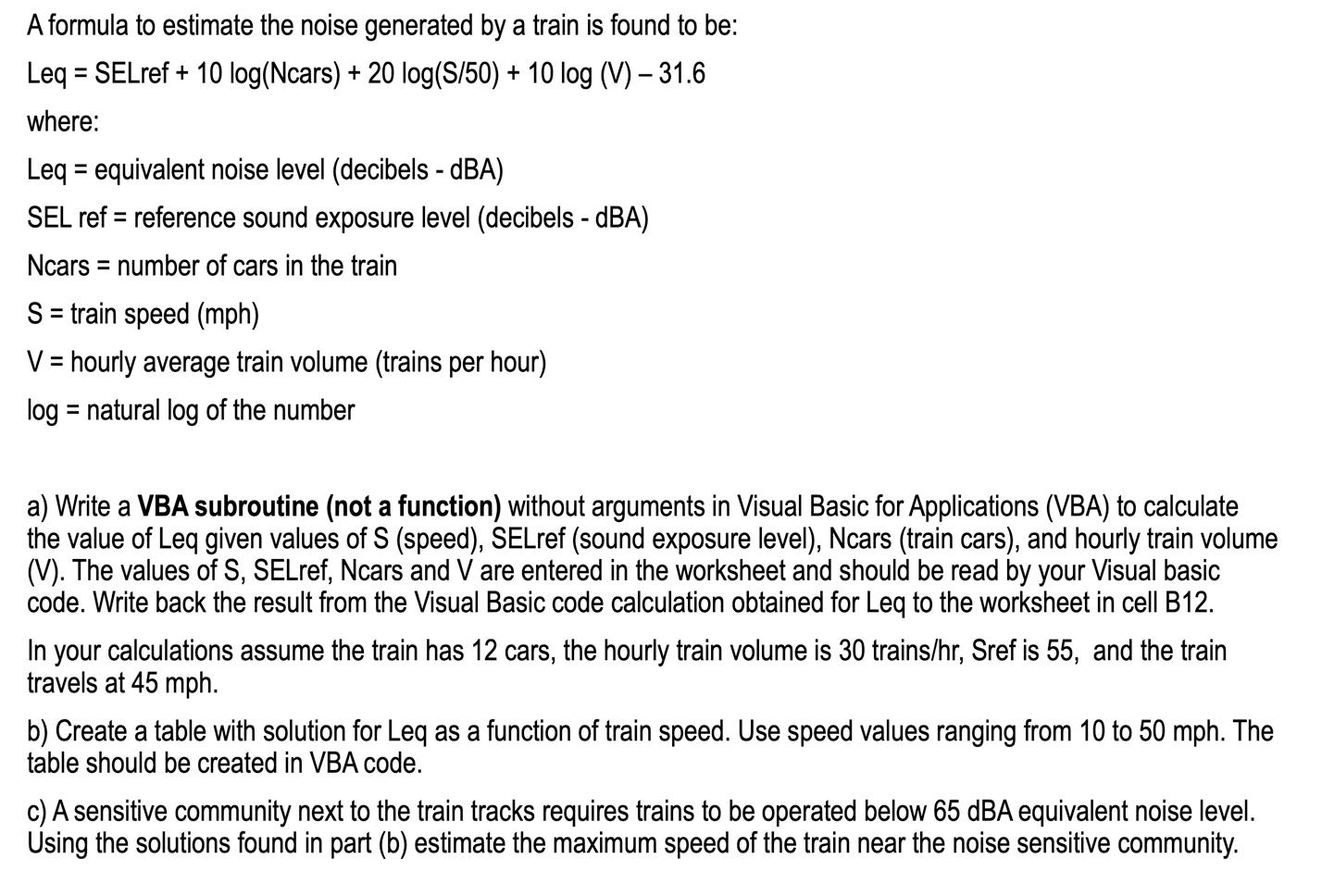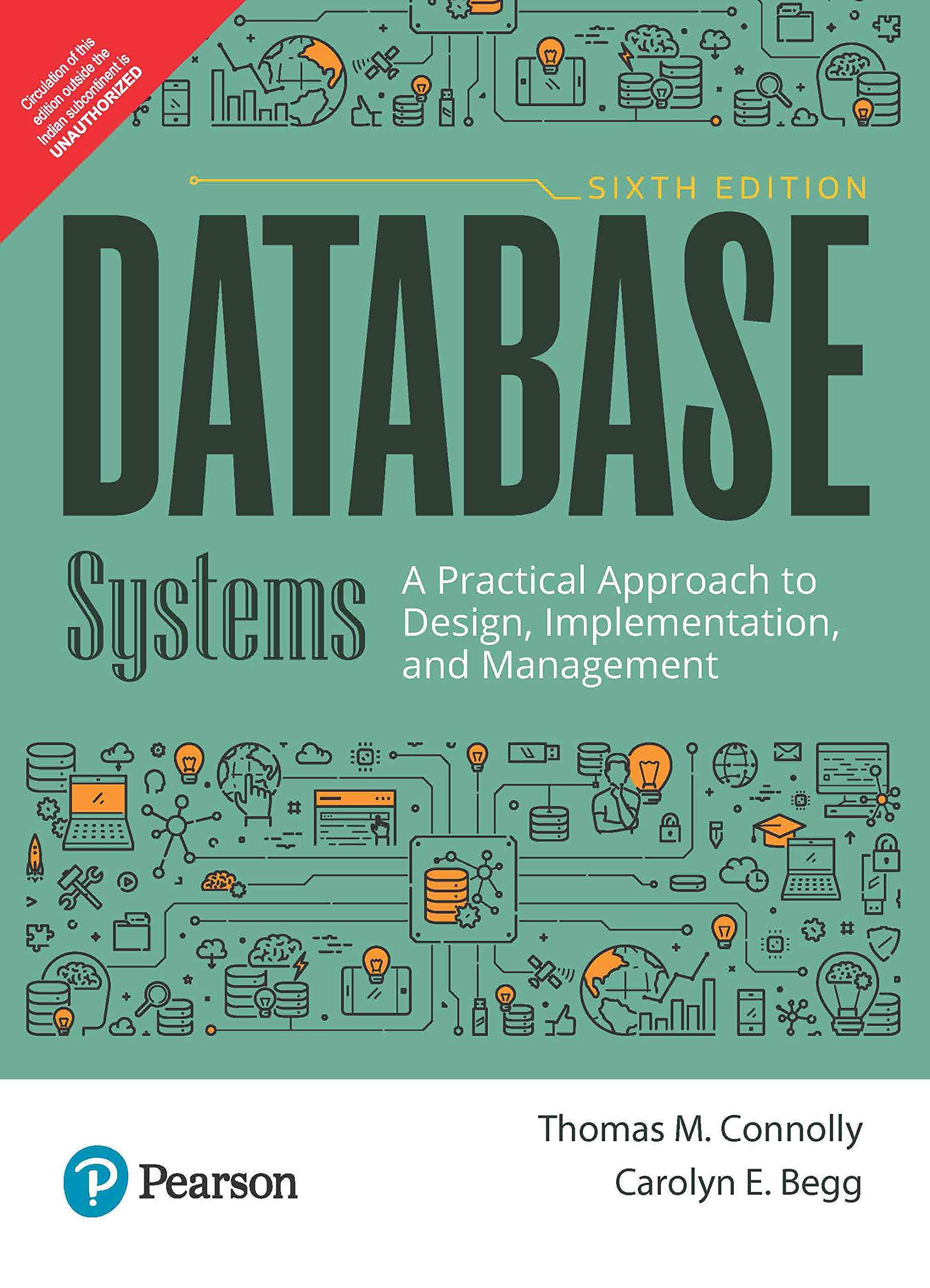
A formula to estimate the noise generated by a train is found to be: Leq = SELref + 10 log(Ncars) + 20 log(S/50) + 10 log (V) 31.6 where: Leq = equivalent noise level (decibels - dBA) SEL ref = reference sound exposure level (decibels - dBA) Ncars = number of cars in the train S = train speed (mph) V = hourly average train volume (trains per hour) log = natural log of the number a) Write a VBA subroutine (not a function) without arguments in Visual Basic for Applications (VBA) to calculate the value of Leq given values of S (speed), SELref (sound exposure level), Ncars (train cars), and hourly train volume (V). The values of S, SELref, Ncars and V are entered in the worksheet and should be read by your Visual basic code. Write back the result from the Visual Basic code calculation obtained for Leq to the worksheet in cell B12. In your calculations assume the train has 12 cars, the hourly train volume is 30 trains/hr, Sref is 55, and the train travels at 45 mph. b) Create a table with solution for Leq as a function of train speed. Use speed values ranging from 10 to 50 mph. The table should be created in VBA code. c) A sensitive community next to the train tracks requires trains to be operated below 65 dBA equivalent noise level. Using the solutions found in part (b) estimate the maximum speed of the train near the noise sensitive community. A formula to estimate the noise generated by a train is found to be: Leq = SELref + 10 log(Ncars) + 20 log(S/50) + 10 log (V) 31.6 where: Leq = equivalent noise level (decibels - dBA) SEL ref = reference sound exposure level (decibels - dBA) Ncars = number of cars in the train S = train speed (mph) V = hourly average train volume (trains per hour) log = natural log of the number a) Write a VBA subroutine (not a function) without arguments in Visual Basic for Applications (VBA) to calculate the value of Leq given values of S (speed), SELref (sound exposure level), Ncars (train cars), and hourly train volume (V). The values of S, SELref, Ncars and V are entered in the worksheet and should be read by your Visual basic code. Write back the result from the Visual Basic code calculation obtained for Leq to the worksheet in cell B12. In your calculations assume the train has 12 cars, the hourly train volume is 30 trains/hr, Sref is 55, and the train travels at 45 mph. b) Create a table with solution for Leq as a function of train speed. Use speed values ranging from 10 to 50 mph. The table should be created in VBA code. c) A sensitive community next to the train tracks requires trains to be operated below 65 dBA equivalent noise level. Using the solutions found in part (b) estimate the maximum speed of the train near the noise sensitive community







